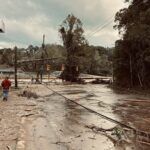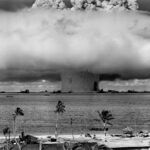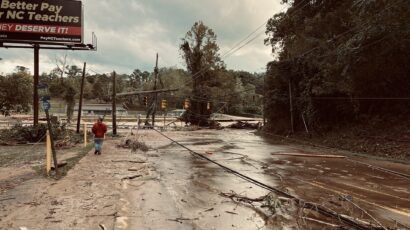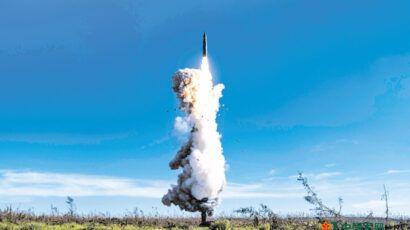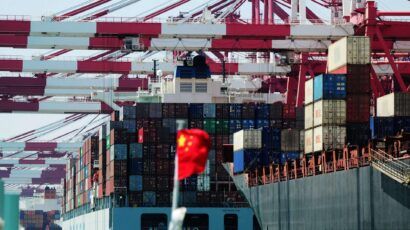Armageddon 2.0
By Fred Guterl | November 28, 2012
The world lived for half a century with the constant specter of nuclear war and its potentially devastating consequences. The end of the Cold War took the potency out of this Armageddon scenario, yet the existential dangers have only multiplied.
Today the technologies that pose some of the biggest problems are not so much military as commercial. They come from biology, energy production, and the information sciences — and are the very technologies that have fueled our prodigious growth as a species. They are far more seductive than nuclear weapons, and more difficult to extricate ourselves from. The technologies we worry about today form the basis of our global civilization and are essential to our survival.
The mistake many of us make about the darker aspects of our high-tech civilization is in thinking that we have plenty of time to address them. We may, if we’re lucky. But it’s more likely that we have less time than we think. There may be a limited window of opportunity for preventing catastrophes such as pandemics, runaway climate change, and cyber attacks on national power grids.
Emerging diseases. The influenza pandemic of 2009 is a case in point. Because of rising prosperity and travel, the world has grown more conducive to a destructive flu virus in recent years, many public health officials believe. Most people probably remember 2009 as a time when health officials overreacted. But in truth, the 2009 virus came from nowhere, and by the time it reached the radar screens of health officials, it was already well on its way to spreading far and wide.
“H1N1 caught us all with our pants down,” says flu expert Robert G. Webster of St. Jude Children’s Research Hospital in Memphis, Tennessee. Before it became apparent that the virus was a mild one, health officials must have felt as if they were staring into the abyss. If the virus had been as deadly as, say, the 1918 flu virus or some more recent strains of bird flu, the result would have rivaled what the planners of the 1950s expected from a nuclear war. It would have been a “total disaster,” Webster says. “You wouldn’t get the gasoline for your car, you wouldn’t get the electricity for your power, you wouldn’t get the medicines you need. Society as we know it would fall apart.”
Climate change. Climate is another potentially urgent risk. It’s easy to think about greenhouse gases as a long-term problem, but the current rate of change in the Arctic has alarmed more and more scientists in recent years. Tim Lenton, a climate scientist at the University of Exeter in England, has looked at climate from the standpoint of tipping points — sudden changes that are not reflected in current climate models. We may already have reached a tipping point — a transition to a new state in which the Arctic is ice-free during the summer months.
Perhaps the most alarming of Lenton’s tipping points is the Indian summer monsoon. Smoke from household fires, and soot from automobiles and buses in crowded cities, rises into the atmosphere and drifts out over the Indian Ocean, changing the atmospheric dynamics upon which the monsoon depends — keeping much of the sun’s energy from reaching the surface, and lessening the power of storms. At the same time, the buildup of greenhouse gases — emitted mainly from developed countries in the northern hemisphere — has a very different effect on the Indian summer monsoon: It makes it stronger.
These two opposite influences make the fate of the monsoon difficult to predict and subject to instability. A small influence — a bit more carbon dioxide in the atmosphere, and a bit more brown haze — could have an outsize effect. The Indian monsoon, Lenton believes, could be teetering on a knife’s edge, ready to change abruptly in ways that are hard to predict. What happens then? More than a billion people depend on the monsoon’s rains.
Other tipping points may be in play, says Lenton. The West African monsoon is potentially near a tipping point. So are Greenland’s glaciers, which hold enough water to raise sea levels by more than 20 feet; and the West Antarctic Ice Sheet, which has enough ice to raise sea levels by at least 10 feet. Regional tipping points could hasten the ill effects of climate change more quickly than currently projected by the Intergovernmental Panel on Climate Change.
Computer hacking. The computer industry has already made it possible for computers to handle a variety of tasks without human intervention. Autonomous computers, using techniques formerly known as artificial intelligence, have begun to exert control in virtually every sphere of our lives. Cars, for instance, can now take action to avoid collisions. To do this, a car has to make decisions: When does it take control? How much braking power should be applied, and to which wheels? And when should the car allow its reflex-challenged driver to regain control? Cars that drive themselves, currently being field tested, could hit dealer showrooms in a few years.
Autonomous computers can make our lives easier and safer, but they can also make them more dangerous. A case in point is Stuxnet, the computer worm designed by the US and Israel to attack Iran’s nuclear fuel program. It is a watershed in the brief history of malware — the Jason Bourne of computer code, designed for maximum autonomy and effectiveness. Stuxnet’s creators gave their program the best training possible: they stocked it with detailed technical knowledge that would come in handy for whatever situation Stuxnet could conceivably encounter. Although the software included rendezvous procedures and communication codes for reporting back to headquarters, Stuxnet was built to survive and carry out its mission even if it found itself cut off.
The uranium centrifuges that Stuxnet attacked are very similar in principle to the generators that power the US electrical grid. Both are monitored and controlled by programmable-logic computer chips. Stuxnet cleverly caused the uranium centrifuges to throw themselves off-balance, inflicting enough damage to set the Iranian nuclear industry back by 18 months or more. A similar piece of malware installed on the computers that control the generators at the base of the Grand Coulee Dam would likewise cause them to shake, rattle, and roll — and eventually explode.
If Stuxnet-like malware were to insinuate itself into a few hundred power generators in the United States and attack them all at once, the damage would be enough to cause blackouts on the East and West Coasts. With such widespread destruction, it could take many months to restore power to the grid. It seems incredible that this should be so, but the worldwide capacity to manufacture generator parts is limited. Generators generally last 30 years, sometimes 50, so normally there’s little need for replacements. The main demand for generators is in China, India, and other parts of rapidly developing Asia. That’s where the manufacturers are — not in the United States. Even if the United States, in crisis mode, put full diplomatic pressure on supplier nations — or launched a military invasion to take over manufacturing facilities — the capacity to ramp up production would be severely limited. Worldwide production currently amounts to only a few hundred generators per year.
The consequences of going without power for months, across a large swath of the United States, would be devastating. Backup electrical generators in hospitals and other vulnerable facilities would have to rely on fuel that would be in high demand. Diabetics would go without their insulin; heart attack victims would not have their defibrillators; and sick people would have no place to go. Businesses would run out of inventory and extra capacity. Grocery stores would run out of food, and deliveries of all sorts would virtually cease (no gasoline for trucks and airplanes, trains would be down). As we saw with the blackouts caused by Hurricane Sandy, gas stations couldn’t pump gas from their tanks, and fuel-carrying trucks wouldn’t be able to fill up at refueling stations. Without power, the economy would virtually cease, and if power failed over a large enough portion of the country, simply trucking in supplies from elsewhere would not be adequate to cover the needs of hundreds of millions of people. People would start to die by the thousands, then by the tens of thousands, and eventually the millions. The loss of the power grid would put nuclear plants on backup, but how many of those systems would fail, causing meltdowns, as we saw at Fukushima? The loss in human life would quickly reach, and perhaps exceed, the worst of the Cold War nuclear-exchange scenarios. After eight to 10 days, about 72 percent of all economic activity, as measured by GDP, would shut down, according to an analysis by Scott Borg, a cybersecurity expert.
These scenarios are not inevitable, of course, and perhaps they’re not even likely. But they are certainly not beyond the pale. Sustaining a world of 7 billion people — on its way to nearly 10 billion by the end of the century — cannot be done without risk. Dealing with these risks is going to take every good idea we have. The first step is knowing what those risks are.
Together, we make the world safer.
The Bulletin elevates expert voices above the noise. But as an independent nonprofit organization, our operations depend on the support of readers like you. Help us continue to deliver quality journalism that holds leaders accountable. Your support of our work at any level is important. In return, we promise our coverage will be understandable, influential, vigilant, solution-oriented, and fair-minded. Together we can make a difference.
Topics: Opinion


